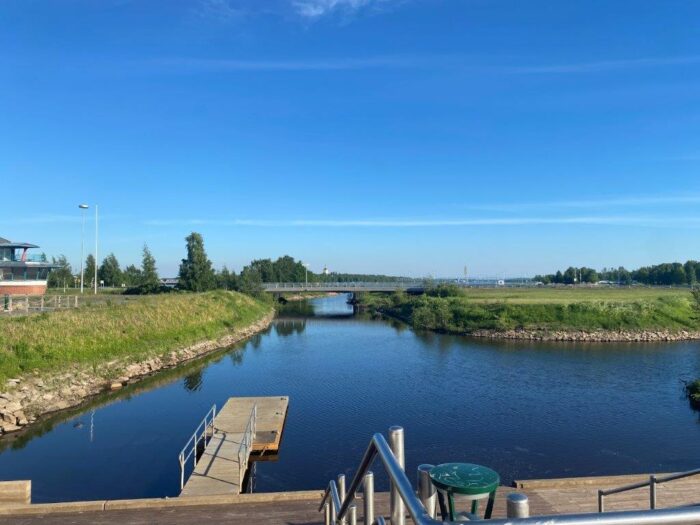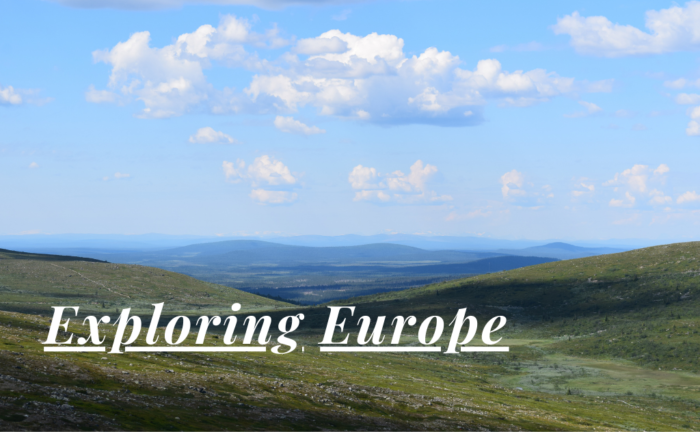Right next to the border between Finland and Sweden you will find the town of Tornio. Together with its twin city Haparanda, just across the border, it creates one of a few urban areas this far north in Europe. Tornio is the seat of the local municipality, a municipality that has a population of around 21.000 inhabitants. About 16.600 people live in the town. Despite the proximity to Sweden, almost 97% of the population are Finnish speakers. As you might know, Finland has two official languages, Finnish and Swedish.
The border between Finland and Sweden applies the free movement of the Nordic Passport Union and later the Schengen Agreement. This makes it possible to walk, bike, or drive across the border and all you will notice is the change of available stores and the language on all signs. The closeness to the border has resulted in Tornio-Haparanda seeing an increase in established commercial areas for border shopping.








A Short History of Tornio
Tornio was for centuries the center of trade for trade within the whole of Lapland. The whole of Lapland was earlier within Sweden’s borders. The town was founded in 1621 and received its town charters from the Swedish King Gustav II Adolf. It was the urban planner Olof Bure who became responsible for the layout of the new city and his work is still visible in today’s street layout of the town.
Tornio as a Part of Russia
Tornio was, together with the rest of what is today Finland, separated from Sweden in 1809. The town became a border town along the Swedish-Russian border. The separation meant the establishment of a twin city on the Swedish side of the border in the 1820s, a town that later would become what is today Haparanda.
During the century after Finland became a part of Russia the town was developed into a garrison town. The split from Sweden also saw the town becoming unilingually Finnish, instead of the earlier Swedish-speaking majority. Either way, Tornio saw a decline in importance due to the massive loss of trade going through the town.
Tornio After Finnish Independence
Finland gained its independence in 1917 and as a result, Tornio lost its garrison. It continued as a sleepy town in northern Finland until the Second World War. During the Lapland War, some fighting took place along the town’s streets, but it survived the war and did not share the fate of other towns in Lapland that were burned down by the fleeing soldiers of Nazi Germany.
The post-war era has seen some industrialization in the area. The Lapin Kulta brewery and the Outokumpu steel mill became important employers as the town started to develop. Later there has also been further cross-border trade and the union with its twin city Haparanda across the border in Sweden has grown stronger. This was made possible by the Nordic Passport Union which was established in 1958. The treaty meant free movement across the border, something that has only been fully limited once since. The Covid-19 pandemic and its restrictions in the 2020s resulted in a temporary hard border between Sweden and Finland. The free movement has seen the establishment of new commercial centers in both Tornio and Haparanda, making it possible for people to easily cross the border to find the stores typical for the other country.






Things to Do and See
The border really is the main attraction of both Tornio and Haparanda and its accessibility makes it a really interesting place to explore. There is also the possibility to explore the Torne River, either on foot or by bicycle. When standing at the river, you really get that feeling that there is not much separating Finland and Sweden, the other country is right there on the other side.
The Finnish-Swedish Border
Crossing the border is possible at several locations between Tornio and Haparanda and is by itself something quite interesting to do while visiting. The numerous different signs stating if you are in Sverige or in Suomi is a perfect photo opportunity and some of these are older than others.
Victoria Square
Named after the Swedish Crown Princess Victoria this square was completed in 2011. It is what the local authorities described as a shared marketplace for Tornio and Haparanda. Its location is right on the border. This is a square where New Year is celebrated twice each year. First the Finnish New Year and an hour later the Swedish New Year. Don’t try to ask anyone for the time though, how can you tell which time you are given?
Rajalla Shopping Center
Rajalla, literally meaning “on the border”, is a shopping center right next to the border. This is where you can find many of the stores you usually find in other Finnish towns. But there are of course also a few Swedish stores to be found here as well.
The Museum of Torne Valley
Torne Valley is a region that includes both the area of Haparanda and the area of Tornio. The Museum of Torne Valley is the official museum for both Tornio municipality and Haparanda Municipality in Sweden. Historically, there were no national borders within the region. There is, however, a border today and that makes this museum quite unique. It is most likely the only cross-border museum in the world. The museum exhibits and safeguards the local cultural heritage.
Kojamo – The Steel Salmon Statue
Along the shores of the Torne River is a large statue of a steel salmon known as Kojamo. It was unveiled for Tornio’s 400-year-celebration in 2021. It is the work of the couple Pekka and Teija Isorättyä.






How to Get to Tornio
- Flights: Kemi-Tornio Airport (KEM) is 26 kilometers away and offers a few domestic flights. Other options close by are Luleå Airport (LLA) in Sweden and Rovaniemi Airport (RVN) further north.
- Car: Tornio is along the E8, north of Oulu and Kemi. It is also the northern endpoint of the E4 coming from Sweden.
- Train: There are long-distance trains connecting Tornio with Helsinki and Kolari. There are also trains from nearby Haparanda with connections to Boden in Sweden.
The driving distance from 5 major Finnish cities, according to Google Maps:
- Helsinki – 738 kilometers (8 h 11 min)
- Turku – 777 kilometers (8 h 38 min)
- Vaasa – 449 kilometers (5 h 15 min)
- Oulu – 132 kilometers (1 h 31 min)
- Joensuu – 525 kilometers (6 h)
Looking to Explore more of Finland and Europe?








